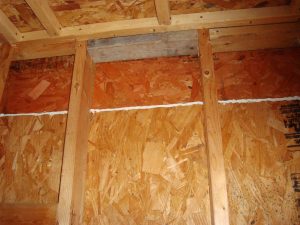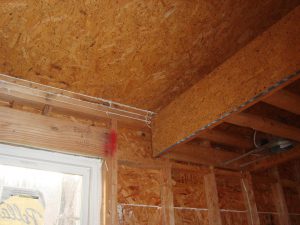The first step to air sealing a home to achieve maximum energy efficiency is to understand which caulk to use in the given application. Here is a list of types of caulk.
100% Silicone
This type of caulk adheres best and lasts the longest, but it sets up quickly and is more difficult to apply and correct mistakes, requires mineral spirits to clean up and can’t be painted. It’s best for non-porous surfaces and has a shorter shelf life. Check the expiration date on the tube because if you use one that’s outdated it won’t cure and makes a mess.
Polyurethane Caulk
This type of caulk is the best for almost any application, but it can be difficult to use and requires mineral spirits to clean up. It can be painted.
Elastomeric Caulk
This type of caulk is an excellent choice for most porous surfaces because of its flexibility and adhesion properties, its ease of use and water clean up.
Latex Caulk
Although it tends to be less expensive, latex caulk will harden when exposed to the elements so its durability is questionable and it’s not the best choice for exterior surfaces.
Siliconized Acrylic Caulk
The most popular caulk and easiest to use, this is a good choice for most applications.
Butyl Caulk
There are numerous problems with butyl caulks. They’re difficult to use, dry slowly, require solvent clean up and have a tendency to shrink excessively and harden and crack quite prematurely.
Stopping air flow through the walls will save you money. Caulk is a good line of defense, but there are other things you should do as well. We will get to that in a future blog post. Want to figure out where you need to caulk in your existing house right now? Get the test.
Air sealing is the first step to making your home energy efficient. Here are some examples from a contractor doing his first high performance home. They were excellent at finding gaps and cracks and filling them with a long-lasting caulk to stop air leakage.






